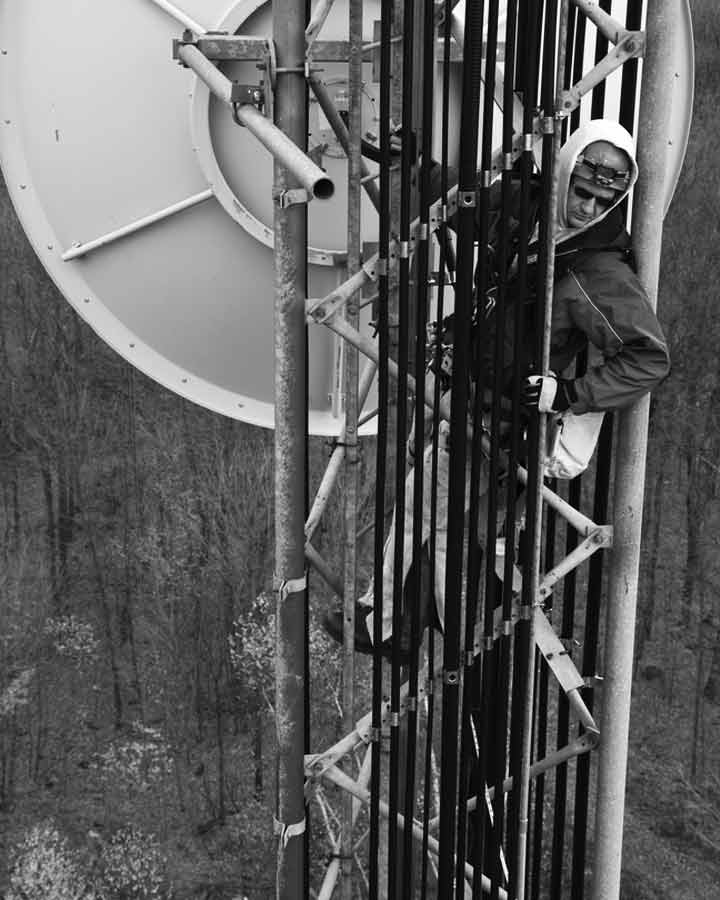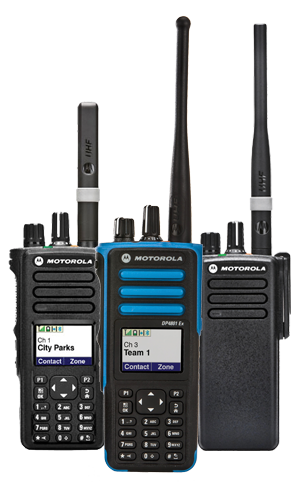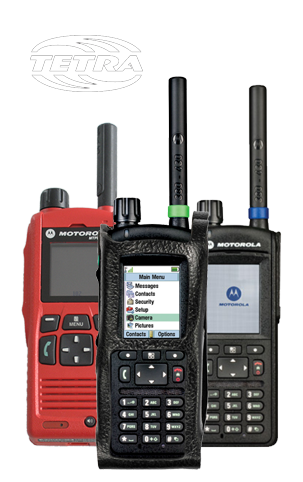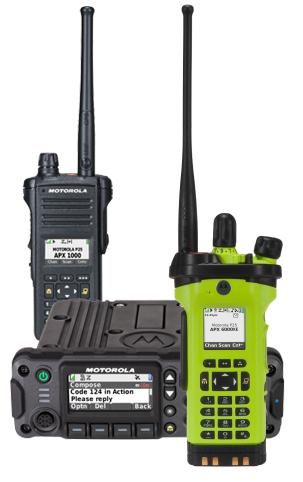Which Technology for Your Organization
Today there is a wide range of technologies available to provide mission critical mobile voice and data solutions. Existing, new and merging technologies should be considered carefully! Our technology sections will guide you through the various different options.


TETRA
TETRA is a standard specified by the European Telecommunications Standards Institute (ETSI) during the '90s in response to the need of a common digital trunked standard for PMR. ETSI standard assures the interoperability between various manufacturers terminals that can indistinctly operate on any TETRA network, to fulfil the user requirements and provide a future-proof technology.
Spectrum Utilization TETRA utilizes Time Division Multiple Access (TDMA) technology to achieve spectrum efficiency. TETRA can achieve up to four TDMA time slots in one 25 KHz radio channel frequency band. Frequency bands for TETRA products that are typically found in the market today:
TETRA Features Shortlist
• Digital voice quality
• Fast emergency call set-up
• Comprehensive support to group and individual voice and data communications
• Communications also in fringe or out of coverage areas with direct mode of operation (DMO)
• Multiple security schemes and algorithms (two encryption levels)
• Data transmission at up to 28.8Kbps and simultaneous with voice
• Standard interfaces for data terminal connections (PEI) and for TETRA networks interconnection (ISI)
Frequency Guide
• 380 - 400 MHz
• 410 – 430 MHz
• 800 MHz Band
Availability
• Worldwide
TETRA Capabilities and Features From end user point of view, TETRA provides the following features and services:
TETRA User Features Shortlist
• Group call
• Individual call
• Telephone Interconnect Call
• Wireless data: Circuit switch and/or packet data
• Integrated Voice and Data
• Secured network with authentication and encryption
• Direct Mode Operation
• Advanced radio features and capabilities such as Dynamic Grouping, emergency call, etc
Radio & Trunking are a premium reseller and distributor of Motorola Dimetra TETRA Products.
Visit our Product section for more detailed information.
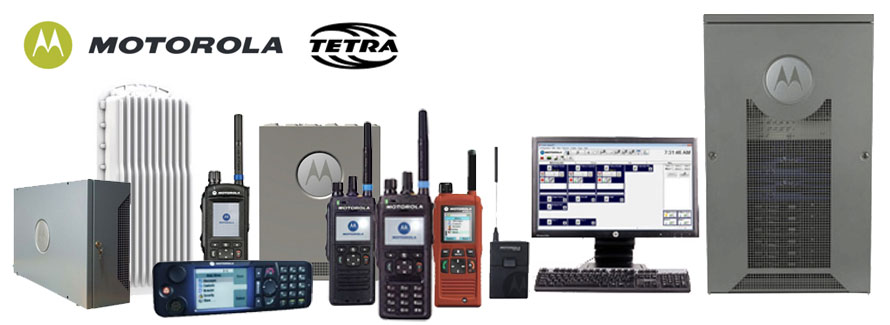

Project P25
APCO-25 (Association of Public Safety Communication Officials – Project 25) is an open standard for digital radio developed in North America under state, local and federal representatives and Telecommunications Industry Association (TIA) governance.
P25 | Phase 1 TDMA | Phase 2 FDMA Project 25 (P25 or APCO-25) is an open standard. Phase 2 has been developed to improve spectrum efficiency by using a 2-slot TDMA scheme. P25 was primarily developed for use by federal, state/province and local public safety agencies in North America.
P25 is not widely used outside public safety agencies in North America.
P25 Features Shortlist
• Group call
• Individual call
• Telephone Interconnect Call
• Wireless data: Circuit switch and/or packet data
• Integrated Voice and Data
• Secured network with authentication and encryption
• Direct Mode Operation to Multisite systems
• Advanced radio features and capabilities such as Dynamic Grouping, emergency call, etc
Frequency Guide
• 700/800 (764-870 MHz), VHF (136-174 MHz) & UHF R1 (380-470 MHz) 700/800 MHz,
Availability
• Predominantly North America
The standard was developed to foster the development and progress of the art of public safety communications. In 1989, APCO formed a Working Group, called APCO Project 25, to work on development of a digitally trunked radio system specifications tailored to public safety needs.
Project 25 was established to provide an industry-wide effort to set standards for uniform digital two way radio communications for public safety and emergency services. APCO-25 brings together representatives from various associations and agencies to obtain as many contributions as possible to make the resulting specification a world standard for digital land public safety mobile radio. The objective is to find solutions that best serve the needs of the public safety marketplace. In addition, the committee has encouraged the participation of numerous international public safety organizations, making this a worldwide recommended standard-setting initiative.
Worldwide interest has been generated due to the standards process being pursued by users working closely with the industry. As APCO is an association representing users, assistance was sought from industry in developing the standard. The Telecommunication Industry Association (TIA) provided technical support and the mechanics of standard writing, which has made the resulting specification (ANSI/TIA 102) into a national industry standard. Published P25 standards suite is administered by the Telecommunications Industry Association (TIA Mobile and Personal Private Radio Standards Committee TR-8). APCO-25, APCO-Project 25, APCO-P25 are all refer to the same standard name.
P25's Suite of Standards specify eight open interfaces between the various components of a land mobile radio system. These interfaces are:
- Common Air Interface (CAI) – standard specifies the type and content of signals transmitted by compliant radios. One radio using CAI should be able to communicate with any other CAI radio, regardless of manufacturer
- Subscriber Data Peripheral Interface – standard specifies the port through which mobiles and portables can connect to laptops or data networks
- Fixed Station Interface – standard specifies a set of mandatory messages supporting digital voice, data, encryption and telephone interconnect necessary for communication between a Fixed Station and P25 RF Subsystem
- Console Subsystem Interface – standard specifies the basic messaging to interface a console subsystem to a P25 RF Subsystem
- Network Management Interface – standard specifies a single network management scheme which will allow all network elements of the RF subsystem to be managed
- Data Network Interface – standard specifies the RF Subsystem's connections to computers, data networks, or external data sources
- Telephone Interconnect Interface – standard specifies the interface to Public Switched Telephone Network (PSTN) supporting both analog and ISDN telephone interfaces.
- Inter RF Subsystem Interface (ISSI) – standard specifies the interface between RF subsystems which will allow them to be connected into wide area networks.
Radio & Trunking are a premium reseller and distributor of Motorola Project P25 ASTRO Products.
Visit our Product section for more detailed information.
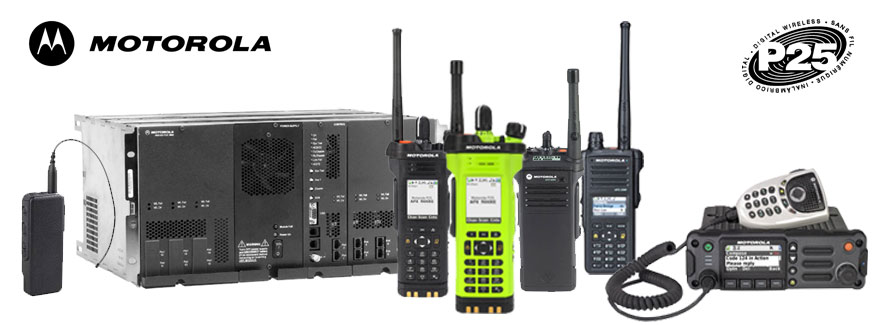

MOTOTRBO (Motorola)
MOTOTRBO is the first digital two-way radio system from Motorola specifically designed to meet the requirements of organizations/industries outside the public safety sector mainstream that require a customizable business-critical communication solution using licensed radio spectrum. MOTOTRBO is a complete two-way radio system that includes portable and mobile radios, a repeater and accessories as well as powerful data applications, such as Text Messaging Services and Location Services.
MOTOTRBO Features Shortlist
• Group call
• Individual call
• Telephone Interconnect Call
• Wireless data: Circuit switch and/or packet data
• Integrated Voice and Data
• Secured network with authentication and encryption
• Direct Mode Operation to Multisite systems
• Advanced radio features and capabilities such as Dynamic Grouping, emergency call, etc
Frequency Guide
• 136 - 174 Mhz
• 400 - 470 Mhz
• other
• other
Availability
• Worldwide
MOTOTRBO is designed to the globally-recognized European Telecommunications Standards Institute (ETSI) Digital Mobile Radio (DMR-Digital Mobile Radio) Tier 2 standard for large organization/enterprise mobile radio.
The DMR Association is the body which represents companies and organizations manufacturing DMR equipment, supplying related products and services or supporting the standard in other ways. This provides an open platform that enables market acceptance and multi-vendor interoperability for voice and data and will assure competitive pricing while protecting customer investment. Motorola is a founding member of the Association and continues to be an active contributor to DMR standards definition and development. As the world’s largest DMR supplier, Motorola is committed to providing its customers with a portfolio of network solutions, infrastructure, terminals, applications and service support.
Why TDMA and how does TDMA differ from FDMA?
Frequency-Division Multiple-Access (FDMA) splits the channel frequency itself into two smaller sub-channels that can carry separate calls side-by-side. By comparison, Time-Division Multiple-Access (TDMA) preserves the full channel width, but divides it into alternating time slots that can each carry an individual call. Motorola maintains that two-slot 12.5 kHz TDMA-based systems, providing 6.25 kHz equivalency, are the better choice for most large organization/enterprise radio users.
Wireless standards based on TDMA technology are already widely used around the world, and future requirements for even greater spectral efficiency also are expected to be based on TDMA.
TDMA technology for narrowband 12.5 KHz (6.25 equivalent-6.25e) organization/business radio users, provides advantages of feature flexibility, lower equipment costs, longer battery life, future-readiness, and the proven ability to increase spectral efficiency without risking increased congestion or interference.
Radio & Trunking are a premium reseller and distributor of Motorola MOTOTRBO Products.
Visit our Product section for more detailed information.


DMR Tier III
DMR - 100% digital TDMA technology, designed to operate two time slots within existing 12.5kHz channel spacing. DMR meets regulatory requirements for 6.25kHz channel equivalence. DMR was developed and ratified by (ETSI) European Telecommunications Standards Institute.
Digital mobile radio (DMR) is an open digital radio standard for professional mobile radio (PMR) users specified in the European Telecommunications Standards Institute (ETSI) Standard TS 102 361 parts 1-4 and used in products sold in all regions of the world. The applicable ETSI emissions compliance standards are EN 300 113 and EN 300 390. The standard was first published in 2005 and has been widely adopted by radio manufacturers and users. Products built to the DMR standard also comply with the U.S. Federal Communications Commission (FCC) mandates in the United States for the use and certification of 12.5 kHz and 6.25 kHz narrowband technology for systems covered by Part 90 regulations.
DMR Tier III Features Shortlist
• Digital voice quality
• Fast emergency call set-up
• Comprehensive support to group and individual voice and data communications
• Communications also in fringe or out of coverage areas with direct mode of operation (DMO)
• Multiple security schemes and algorithms (two encryption levels)
• Data transmission of 9600 bit/s is achieved (utilising both TDMA slots)
• Standard interfaces for data terminal connections (PEI) and for TETRA networks interconnection (ISI)
Frequency Guide
• 136 - 174 MHz
• 400 – 470 MHz
• 800 MHz Band
Availability
• Worldwide
DMR Tier III Capabilities and Features From end user point of view, DMR Tier III provides the following features and services:
User Features Shortlist
• Group call
• Individual call
• Telephone Interconnect Call
• Wireless data: Circuit switch and/or packet data
• Integrated Voice and Data
• Secured network with authentication and encryption
• Direct Mode Operation
• Advanced radio features and capabilities such as preemtive emergency call, etc
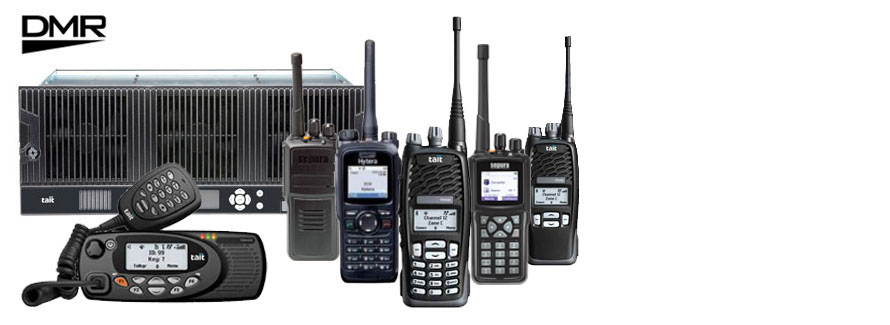

MPT 1327
MPT 1327 is an industry standard for trunked radio communications networks. “It was developed in 1988 by the British Department of Trade and Industry (DTI). Although a British standard it is widely used in Europe, South Africa, New Zealand, Australia and even China. Many countries have their own version of numbering/user interface, the most notable being MPT1343 (UK), Germany – Chekker (Regionet 43), France – 3RP (CNET2424), Australia – Multiax, China -Gong An. MPT systems are still being built in many areas of the world, due to their cost-effectiveness and the legacy of reliability with rugged performance.
MPT1327 Features Shortlist
• Analogue voice quality.
• Fast emergency call set-up.
• Comprehensive support to group and individual voice and data communications.
• Digital control channel for fast call setup supports + data services.
• Subscriber units support encryption levels (Option Boards)
• Data transmission via MAP27 - AVL, Message Handling Dispatcher and Email gateway.
• Fylde MPT1327 is capabable of 500+ sites over multi-regions and Countries.
• Data messages between mobiles and the network are exchanged on the control channel at 1200 bits per second. Each subscriber in an MPT-1327 trunked radio network has a unique call number. For the duration of a call a subscriber is exclusively allocated a traffic channel from the available trunk.
User Features Shortlist
• Individual Call (includes cross protocol support)
• Group Call (includes cross protocol support)
• Broadcast Call (Includes cross protocol support)
• All Call (radio to all users calls (includes cross protocol support)
• Gateway Call (SIP/PBX - PSTN)
• Priority Call (Normal / Priority gives priority over lower level calls. Applicable to individual, group and gateway calls)
• Data Call (SDM) up to 100 characters can be sent and received.
• Status Call (32 preprogrammed messages can be sent and received)
• Transparent Data Call (for remote telemetry or data applications)
• GPS Data Delivery (For GPS-Based Asset tracking)• Emergency Call & Alert
• Pre-emptive Emergency If the network is busy, this call service clears down the existing call and gives the highest priority for the emergency call.
• Remote Kill/Stun/Revive (disables a lost or stolen radio over the air)
• Call Back (Up to ten missed incoming calls can be stored to return the call later.
• Call Queue (fully automatic controller within the infrastucture)
• Digital Voice Scrambler (32,000 codes scrambler)
• ANI (Automatic number identifi cation) radio shows alias of who is calling)
• Late Entry Call Set-up (this function shows caller’s name and allows you to join a conversation)


